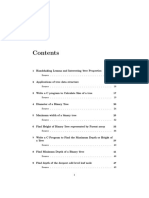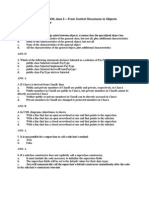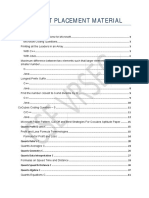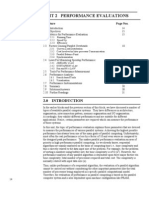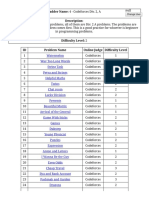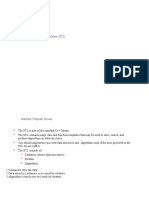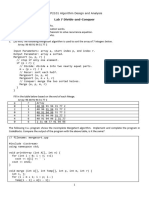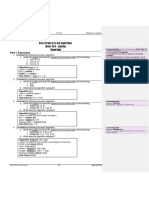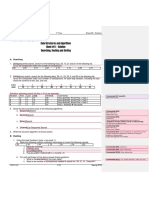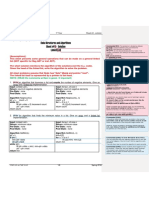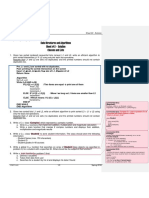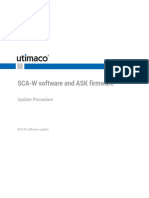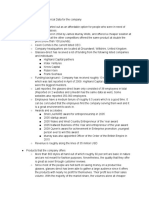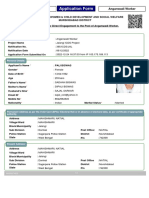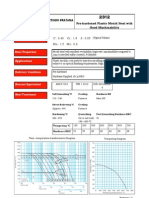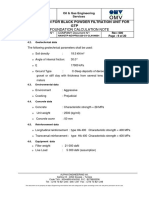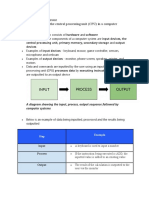0% found this document useful (0 votes)
165 views2 pagesData Structures and Algorithms Sheet #4 Recursion: Part I: Exercises
This document contains a series of recursive algorithm problems and exercises. It begins with 4 multi-part recursive algorithm examples, asking students to trace the recursive calls and determine what each algorithm computes. It then asks questions about the placement of recursive calls and compares two recursive linked list search functions. The second part presents 18 recursive algorithm problems covering topics like summing series, array/linked list traversal, substring checking, and classic recursive problems like palindrome and Josephus problem.
Uploaded by
mahmoud emadCopyright
© © All Rights Reserved
We take content rights seriously. If you suspect this is your content, claim it here.
Available Formats
Download as PDF, TXT or read online on Scribd
0% found this document useful (0 votes)
165 views2 pagesData Structures and Algorithms Sheet #4 Recursion: Part I: Exercises
This document contains a series of recursive algorithm problems and exercises. It begins with 4 multi-part recursive algorithm examples, asking students to trace the recursive calls and determine what each algorithm computes. It then asks questions about the placement of recursive calls and compares two recursive linked list search functions. The second part presents 18 recursive algorithm problems covering topics like summing series, array/linked list traversal, substring checking, and classic recursive problems like palindrome and Josephus problem.
Uploaded by
mahmoud emadCopyright
© © All Rights Reserved
We take content rights seriously. If you suspect this is your content, claim it here.
Available Formats
Download as PDF, TXT or read online on Scribd
/ 2

















